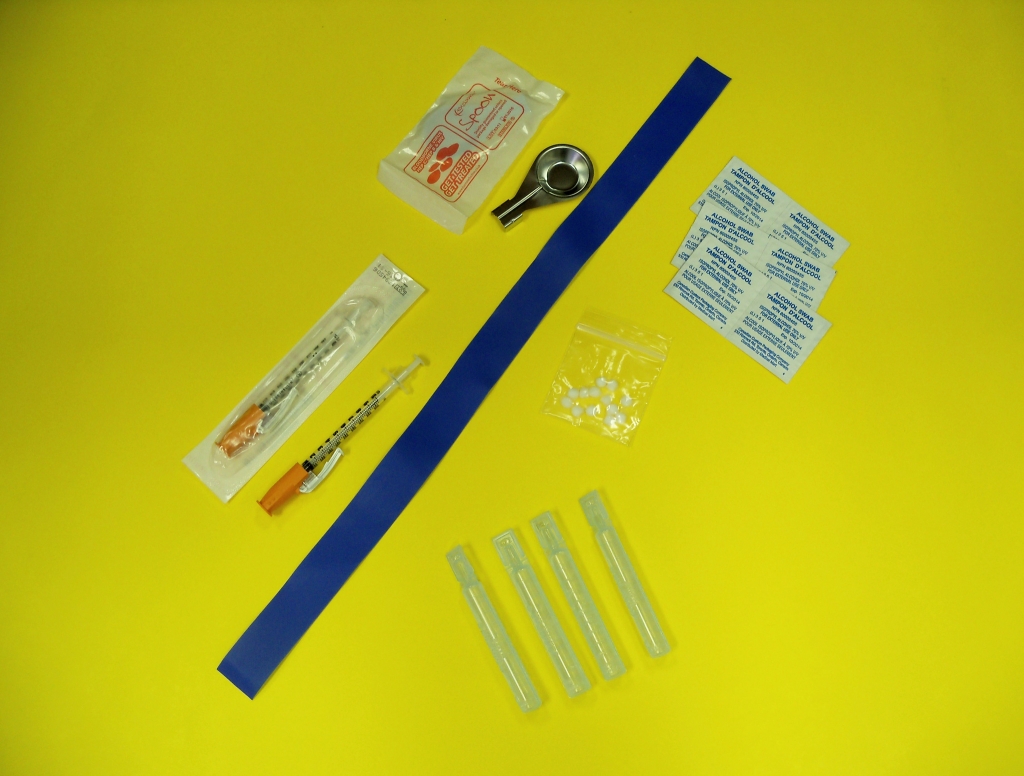As health care providers in the Sioux Lookout zone work to educate communities on the ongoing spread of Hepatitis C and the potential for an HIV outbreak in northern Ontario, the importance of needle exchange programs in First Nations is being highlighted.
Niki Kiepek of the Sioux Lookout First Nation Health Authority (SLFNHA) is helping the health organization take over the needle exchange program from Health Canada in the 31 communities served by SLFNHA.
Kiepek said that providing clean needles to drug users in communities benefits not only the individuals using the needles, but the community as a whole.
“To a large degree it keeps people as healthy as possible while they are choosing to go in this direction,” Kiepek said. “Drug use is generally temporary, so this kind of program helps keep them as safe as possible, and it also keeps the people around them safe.”
The needle exchange program provides clean needles and disposal containers, for free with no questions asked, to anyone who requests them.
The idea is to encourage people not to share needles or reuse old needles, both practices that spread blood borne diseases such as Hep C or HIV.
Part of the incentive for the program came from the fact that needles in communities are being sold for between $5 and $20, Kiepek said, a price that encourages people to share needles or reuse old needles.
In 2011, the Sioux Lookout Zone chiefs passed a resolution to create a blood and blood-borne infections working group to deal with the large increase of Hep C seen in communities, and prevent HIV from spreading throughout the First Nations.
That was followed with a 2012 resolution to specifically work on needle exchange programs in order to prevent the spread of the diseases through intravenous drug use.
The resolutions came as HIV rates continue to spread through First Nations in Saskatchewan and Manitoba, and appear to be moving east. The majority of new HIV cases seen in First Nations communities in those two provinces are spread through intravenous drug use.
Until this past January when SLFNHA took over, the needle exchange program was operated by Health Canada through nursing stations in communities. Now SLFNHA is in the process of recruiting a person in each community to take over coordination of the program.
Kiepek would like to see a coordinator in each community operating the program at a location separate from the nursing station. She also wants those coordinators knowledgeable about drug treatment options available in their communities or elsewhere, so that drug users who decide to get help have a resource person available to talk to.
In the meantime, while the coordinators are being recruited, SLFNHA is sending needles to nursing stations for community members to access.
Kiepek said the program is expecting to give out 30,000 needles per month across the 31 communities.
She added that concerned community leaders and members have questioned whether a needle exchange program may encourage drug use in the communities, but research has shown that the prevalence of needles does not increase the number of drug users in a community.
She did note, however, that SLFNHA is willing to work closely with any community on dealing with concerns.
Gold has arrived.










Gold has arrived. Here in the north of Ontario we see vast streams of gold shimmering across the landscape as autumn is here and the the leaves are turning...
I am the product, evolution of many thousands of years as are you. I grew up on the land in the remote far north of Ontario following in the footsteps of my...